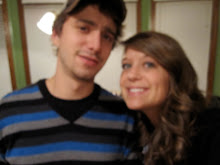
"The Bomb"
In Stillman’s article, Henry Kissinger quotes about technology and the fear of war with an opponent. “Technology is volatile. The advantage of surprise can be overwhelming...Every country lives with the nightmare that even if it puts forth its best effects its survival may be jeopardized by a technological breakthrough on the part of its opponent...(Stillman)”. This makes me think of how General Riper called for this attack to happen against the Soviet Union and he had no idea about the Doomsday Bomb that could kill the entire planet. He simply wanted to start this attack but he was not thinking about how the repercussions might affect himself and everyone else in the world.
Paranoid Bucky
I also found it interesting how all of the characters in the film seemed to think that General Bucky was crazy and over exaggerating when he was talking about spy’s from the Soviet Union. “In the film, General ‘Buck’ Turgidson (George C. Scott) is portrayed as paranoid over the threat of Soviet spying by diplomats with hidden cameras (‘tiny equiptment’). In the end it turns out that his fears were not without reason” (Stillman). Although I did think throughout the entire movie that General Bucky was a little strange, he did end up knowing a lot about the subject at hand in the war room, and his gut feelings were correct in the end.

The War Room silence
Another scene which occurred in the war room of the film, was when some of the men that were contemplating what to do with the situation at hand. The men started arguing and fighting around the room and someone made a comment about how there should be no fighting in the war room. "A group of men haggling over morality and strategy in a "War Room" is gloomily comic enough without an American General and Russian Ambassador wrestling with each other and then being admonished by the President that their behavior violates the room's dignity-"Gentlemen! Such behavior in the War Room" (Richardson). I think this is a very ironic part of the film and it makes for comic relief in this seemingly serious part of the film.

Overall, I really enjoyed this movie while I was watching it, but I really did have a hard time figuring out why certain things were done in the film, and what the symbolism was behind it.
Kubrick, Stanley, dir. Dr. Strangelove or: How I Learned To Stop Worrying and Love the
Bomb. 1964. Columbia Pictures, 2009.
Stillman, Grant. "Two of the MaDdest Scientists." Film History. 20 (2008): 487-500.
Web. 17 May. 2010.
Richardson, Jack. "'Strangelove' and 'the Silence.'" The Hudson Review. 17.2 (1964): 250-255.
Web. 17 May. 2010.

I thought it was interesting the way there was nobody really talking at the table in the war room other than a few people. I think it was understood that everybody at the table was very important but only a few were talking. I liked your general setup for your blog. The only thing I would change is add some titles to the sections in your blog. I think it'll make your blog even easier to follow.
ReplyDeleteI think this movie was harder to figure out as well. I was very confused most of the way through and had to ask myself many questions to figure things out. The female aspect was upsetting because it is very different these days. I wish we could have talked to the one lady that had a part and asked how she felt about being the only lady.
ReplyDeleteMelissa, I definitely agree with you that this film was a bit more difficult to figure out. I personally did not at first see anything worth looking at critically until I read the articles. I also thought about General Bucky, and how it was ironic that he in the end was not being paranoid for no reason and he was in fact correct about the bomb. Great post overall!
ReplyDelete